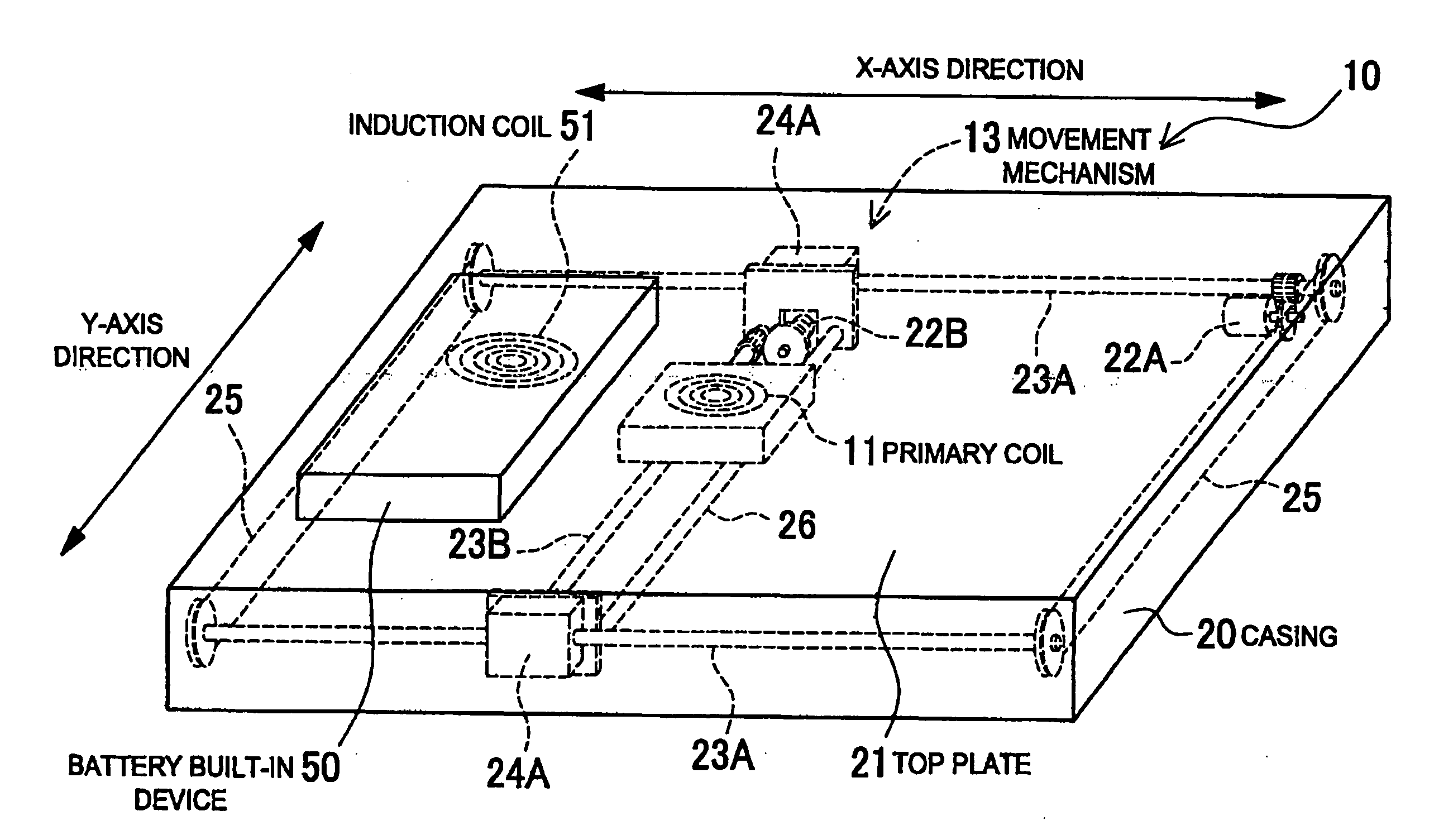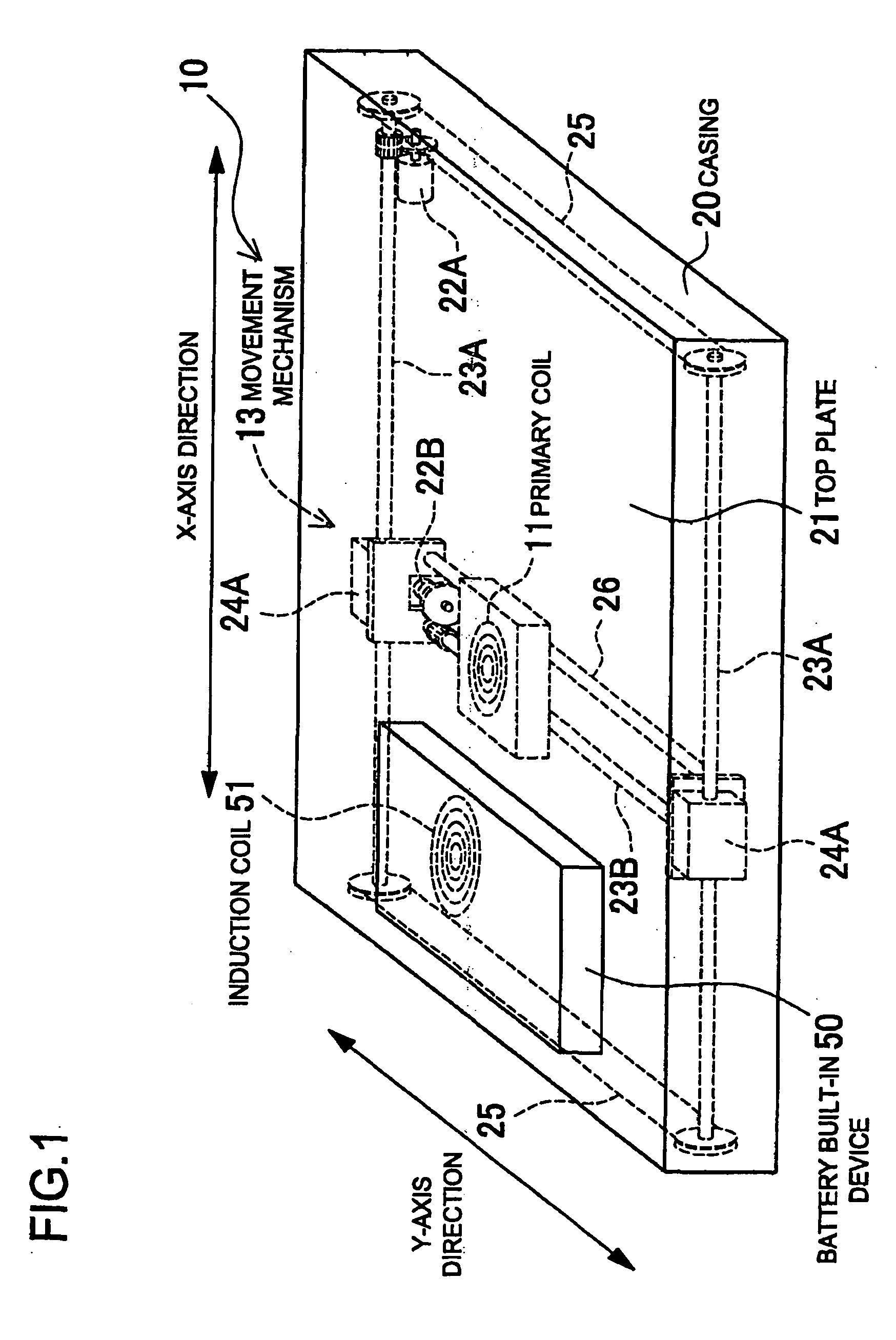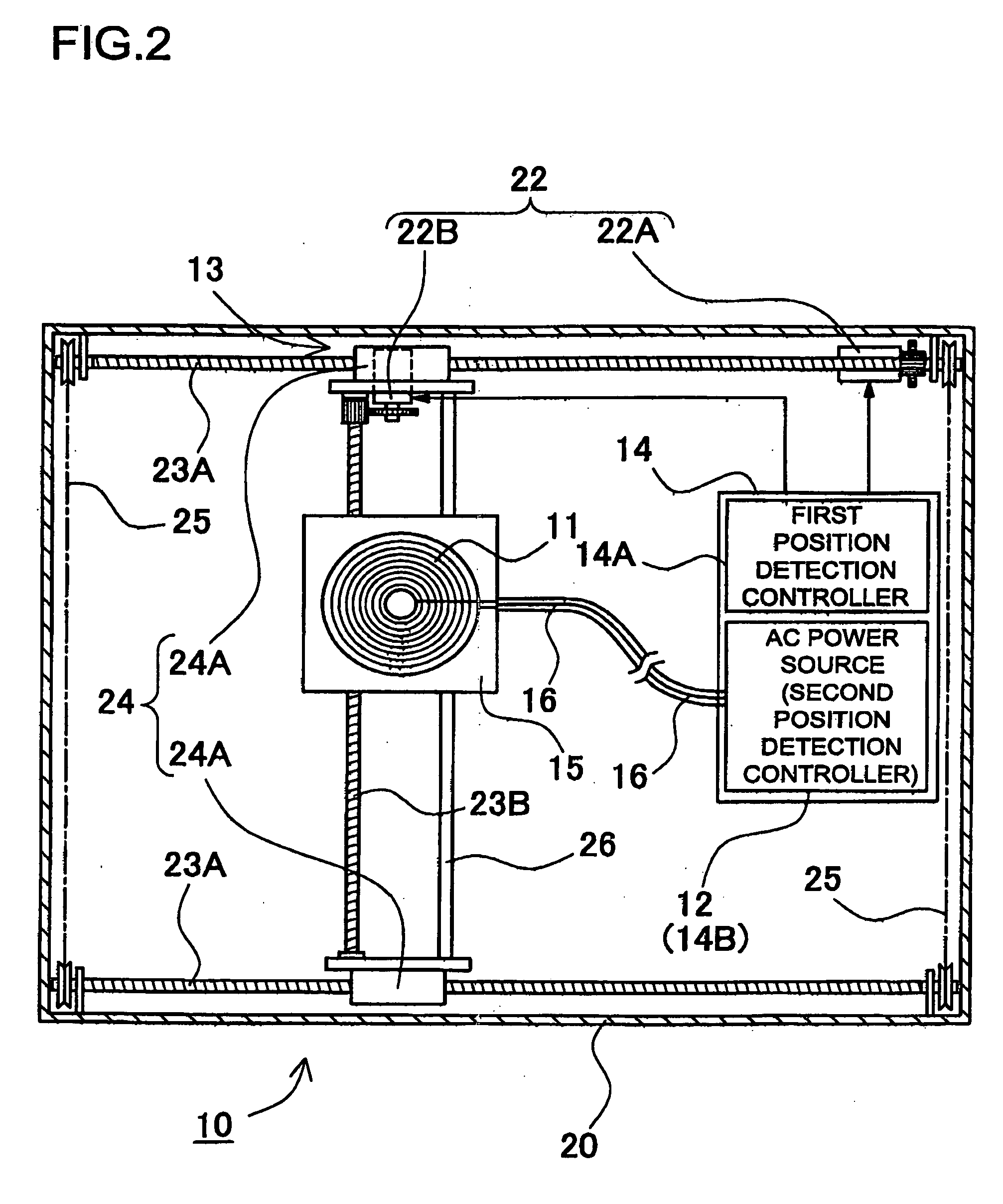Battery charger cradle
a battery charger and cradle technology, applied in the field of battery charger cradles, can solve the problems of time-consuming and cumbersome setting the battery built-in device in place, the inability of the battery pack to be charged, and the difficulty of all users to always set the battery built-in device on the battery charger cradle in a normal manner, so as to achieve efficient detection, efficient charging, and wide area
- Summary
- Abstract
- Description
- Claims
- Application Information
AI Technical Summary
Benefits of technology
Problems solved by technology
Method used
Image
Examples
Embodiment Construction
)
[0042]FIG. 1 through FIG. 6 show block schematic diagrams and principle diagrams of a battery charger cradle. As shown in FIG. 1 and FIG. 6, the battery charger cradle 10 is so designed as to place a battery built-in device 50 atop of the battery charger cradle 10 and charge a built-in battery 52 contained in a battery built-in device 50 by the effect of electromagnetic induction. The battery built-in device 50 incorporates an induction coil 51 electromagnetically coupled to a primary coil 11. The battery built-in device 50 contains a battery 52 that is charged by electric power induced to the induction coil 51. Instead, the battery built-in device 50 may be a battery pack.
[0043]FIG. 6 shows a circuit diagram of the battery built-in device 50. The battery built-in device 50 has a capacitor 53 being parallel-connected to the induction coil 51. The capacitor 53 and the induction coil 51 constitute a parallel resonance circuit 54. A resonance frequency of the capacitor 53 and the indu...
PUM
 Login to View More
Login to View More Abstract
Description
Claims
Application Information
 Login to View More
Login to View More - R&D
- Intellectual Property
- Life Sciences
- Materials
- Tech Scout
- Unparalleled Data Quality
- Higher Quality Content
- 60% Fewer Hallucinations
Browse by: Latest US Patents, China's latest patents, Technical Efficacy Thesaurus, Application Domain, Technology Topic, Popular Technical Reports.
© 2025 PatSnap. All rights reserved.Legal|Privacy policy|Modern Slavery Act Transparency Statement|Sitemap|About US| Contact US: help@patsnap.com



